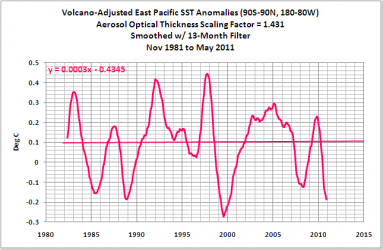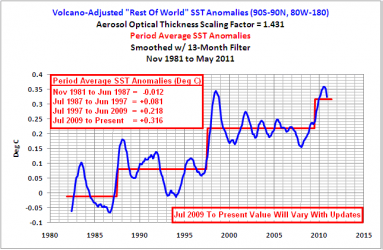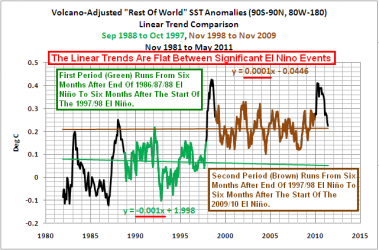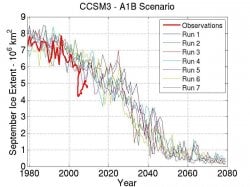ScienceRocks
Democrat all the way!
- Banned
- #1,301
Maybe Greenland will become green again. At one point in time they say that the north pole had about the same climate as present day Florida. Anyway if the ice is melting up there we should start drilling for oil which would help mankind more then the ice melting will hurt it. There isn't really a downside.
A very gentle temperature gradient from the equator to the poles meant weaker global winds, contributing to less upwelling and more stagnant oceans than today. This is evidenced by widespread black shale deposition and frequent anoxic events.[12] Sediment cores show that tropical sea surface temperatures may have briefly been as warm as 42 °C (107 °F), 17 °C (31 °F) warmer than at present, and that they averaged around 37 °C (99 °F). Meanwhile deep ocean temperatures were as much as 15 to 20 °C (27 to 36 °F) higher than today's.[13][14]
Cretaceous - Wikipedia, the free encyclopedia
"In the past few years there has been a real shake-up in the conception of what hothouse climates are like. First, it was found that the Tropical regions in hothouse climates are not tightly thermostatted as had been previously thought. Prior indications of a cool tropics turned out to be an artifact of alteration of the chemistry of marine sediments after they were deposited — a nightmare known as diagenesis to paleoceanographers. The tropics are actually quite a bit warmer than today’s tropics. For example, the Eocene tropical ocean may have been as warm as 35C, as compared to about 29C today. The upward revision of tropical temperatures is quite a good thing for the CO2 theory, since it removes a good part of the “low gradient” problem, wherein models were thought to systematically exaggerate the pole to equator temperature gradient." Real climate.
The thing about this period is co2 was as much as 3,000 ppm
How do you explain it if not for co2?
Another thing---this would be very bad for life as it is today. No question about it.
Last edited:









